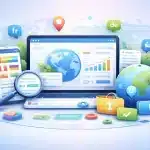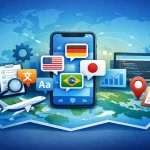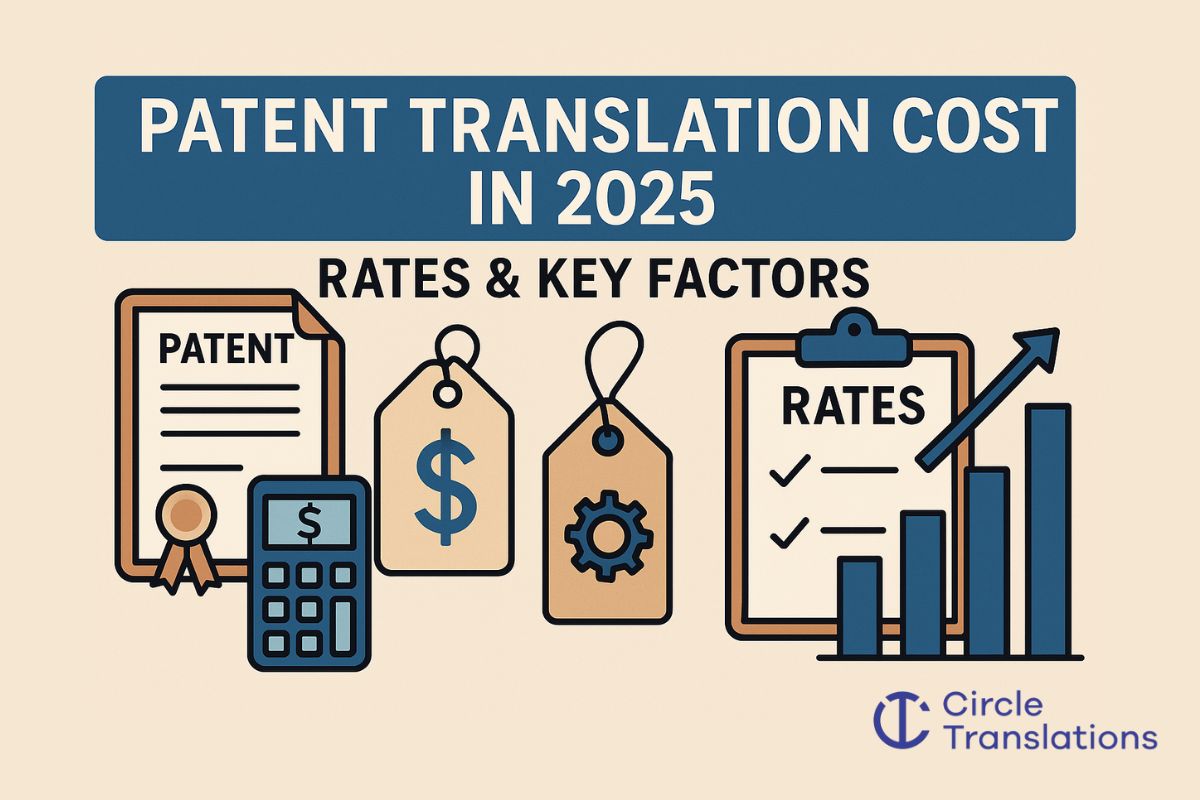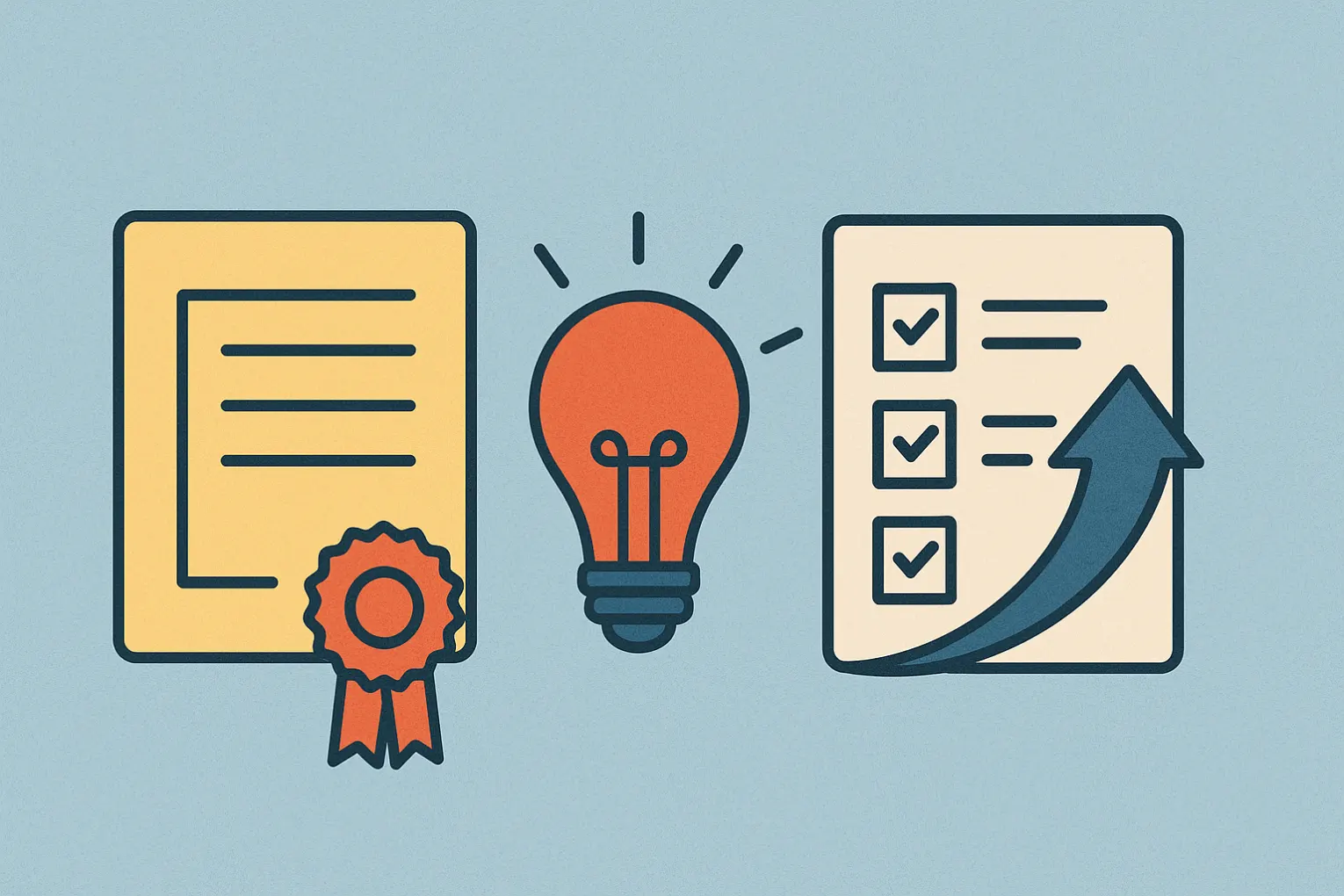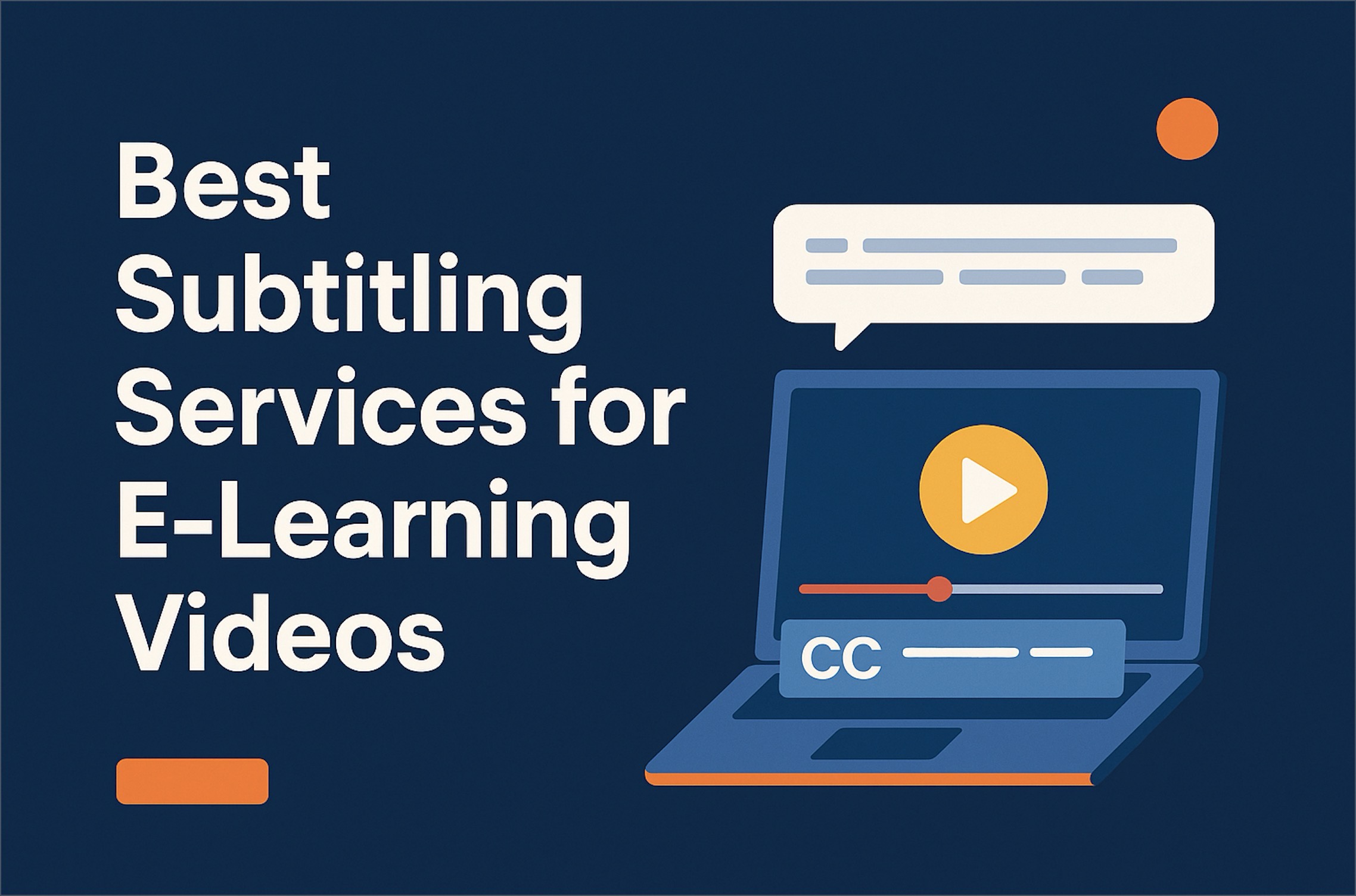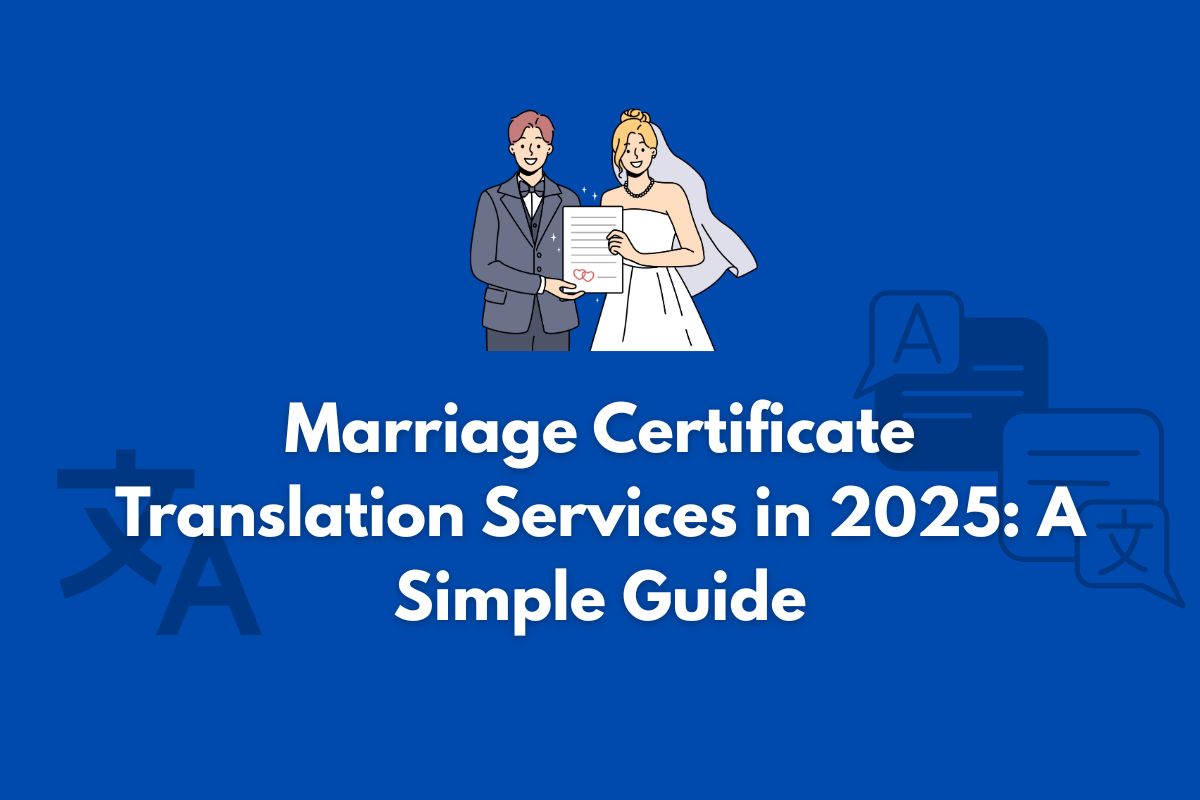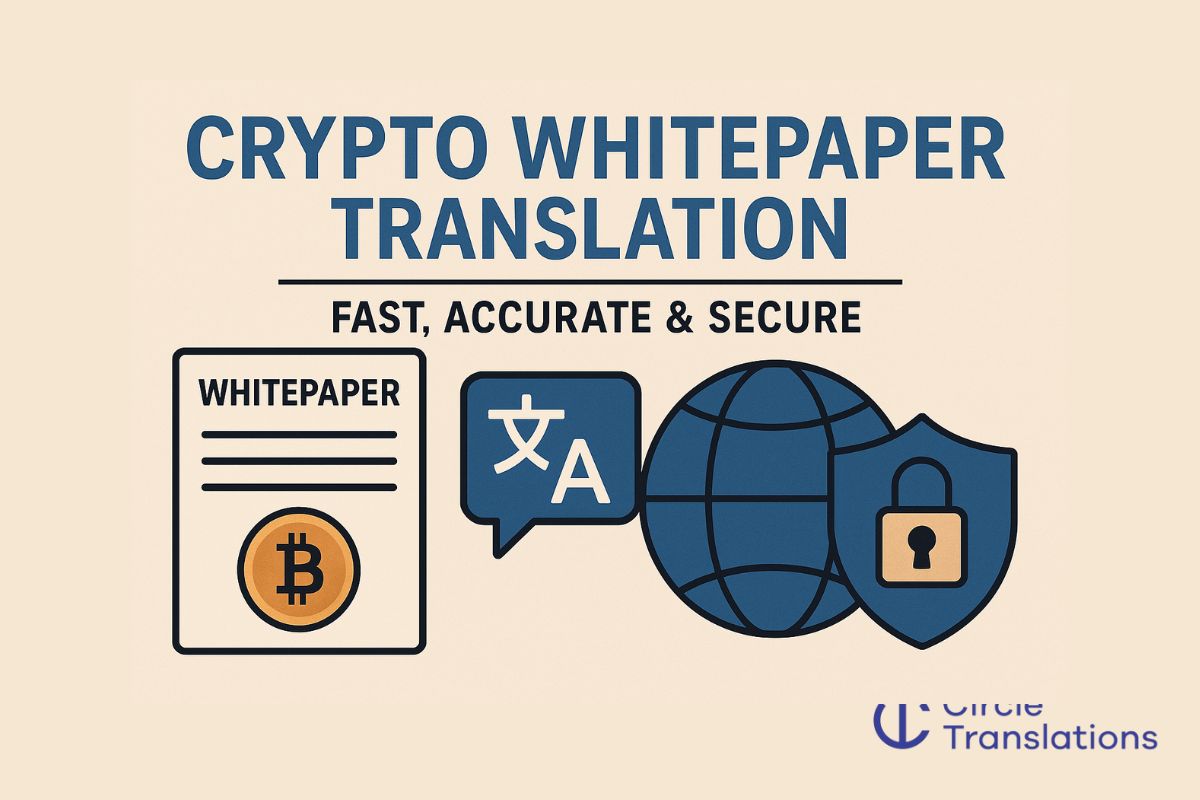Patent translation cost in 2025 ranges from $0.12 to $0.30 per word. National-phase budgets typically start at $2,000–$6,000 per language for major jurisdictions like China, Japan, and Europe. In practice, the price varies by language pair, industry, document complexity, turnaround, and vendor model, whether through a law firm or language service provider (LSP).
Patent translation is a professional translation service that renders legal documents (e.g., claims, specifications, and abstracts) in a foreign language for the sake of international IP protection. It differs from general translation due to the legal, technical, and jurisdictional precision required. Patents demand subject-matter experience, exact terminology, and strict quality assurance (QA) processes, unlike marketing or general content.
This article examines the cost of patent translation in 2025, cost determinants, and budgeting realistic costs for multilingual filings, among others. So let us review the article.
How Much Does Patent Translation Cost in 2025? (Per Word & Per Language)
As we already know from our intro section, the rates vary in various terms. Rates are significantly influenced by whether the translation is handled by a law firm or a language service provider (LSP).
Generally, law firms apply a premium rate due to legal oversight, document vetting, and liability posture. For this reason, $0.25-0.35/word is commonly referenced as a top-end rate. In time-sensitive or high-risk legal scenarios, the rate is higher.
Alternatively, LSPs offer more scalable pricing, often tied to word count, industry, or turnaround urgency. For commonly translated language pairs like English to German (EN→DE), rates are typically lower. For complicated pairs like English to Chinese (EN→ZH) or English to Japanese (EN→JA), the pricing increases due to a shortage of specialized linguists, character set differences, and domain-specific complexity.
Here’s an added breakdown of the 5 languages’ average per-word pricing:
| Language Pair | Standard LSP Rate | Law Firm Rate |
| English to German | $0.12–$0.18 | $0.25-$0.35 |
| English to Japanese | $0.18–$0.25 | $0.35+ |
| English to Chinese Simplified | $0.20–$0.30 | $0.30+ |
| English to Arabic | $0.13- $0.25 | $0.25+ |
| English to Finish | $0.15–$0.20 | $0.30+ |
Key Pricing Insights:
- $0.25-$0.35/word is a widely recognized premium rate. This price normally applies in legal contexts where documents are routed through outside counsel or law firms.
- $0.13–$0.18/word is standard for LSPs handling common language pairs and general technical patents. This covers translation, proofreading, and light QA.
Additional Considerations:
- Minaly, the price influences both due to the availability of linguists and linguistic distance. For example, translating from English to Chinese is more resource-intensive than translating from English to French.
- Document formatting can increase cost. Like InDesign layouts, XML content, or embedded diagrams often require specialized DTP support.
- Quality translation can increase per-word pricing. Business or professional tiers include glossary enforcement, LQA, and dedicated project managers.
If you’re managing multiple jurisdictions, these rates can scale quickly. For example, a 20,000-word biotech patent filed in three languages (DE, JA, ZH) at an average of $0.22/word will incur $13,200 in base translation fees excluding DTP, rush handling, or QA enhancements.
Tip: You can take help from a cost calculator (word count × rate) to budget for each jurisdictional filing, especially in multi-language rollouts. There are many cost calculators available online.
Per-language examples (EN→DE, EN→JA, EN→ZH): what does 10k words cost?
Translating a 10,000-word patent application in 2025 will generally cost between $1,200 and $6000. Usually, it depends on the target language, industry domain, and service level.
Below, I’ve broken down some of the common pairs:
English to German (EN→DE)
Estimated cost: $1,200–$1,500
- German is considered a moderate-cost language in the patent translation landscape.
- The availability of experienced German patent linguists is relatively high within the EU market.
- Mechanical, engineering, and software patents fall toward the lower end of this range.
- Patents with heavy life sciences terminology or formatting need a higher price. For example, tables, chemical structure, etc., types of niche demands more pricing because of the complexity.
English to Japanese (EN→JA)
Estimated cost: $1,800–$2,500
- In today’s translation services, Japanese is one of the most expensive languages for patent translation.
- The price is high because of the complex sentence structure and the scarcity of qualified linguists.
- Japanese patents also require more extensive QA and back-translation reviews. In particular, in pharmaceuticals, biotech, and software fields.
- As a result, the upper end of this range is common for legal-critical documents.
English to Chinese Simplified (EN→ZH)
Estimated cost: $2,000–$3,500
- Chinese Simplified is another expensive language, generally for IP filings in Mainland China (CNIPA).
- Heavy use of technical terms in chemical and technical patents makes them more expensive and slower to review.
- Formatting challenges, such as character sets, annotation placement, or multilingual diagrams, can further increase costs.
- Due to legal and regulatory issues in China, precision and localization are complex. Machine translation is discouraged for all substantive content.
What’s Included in These Estimates?
Each of the pricing ranges above generally includes:
- Human translation by subject-matter expert linguists
- Terminology QA and glossary enforcement
- Linguistic quality assurance (LQA), second linguist or editor review
- Optional DTP/typesetting for complex file formats like XML, InDesign, or diagrams
However, rush delivery, client-specific style guides, compliance formatting, or legal back-translation may cause additional charges.
From my real-life experiences, I suggest a tip: Always confirm your vendor’s inclusion list. Some quote base rates show without QA, formatting, or project management. On the contrary, others include these in bundled pricing tiers. So be specific when you order any translation.
What drives price? (language, domain, word count, formatting, vendor type)
In my findings, I found that patent translation pricing is driven by six primary factors: language pair, industry domain, word count, file formatting, quality level, and vendor type. Understanding each helps procurement teams build accurate and scope-aligned budgets.
1. Language Pair Rarity
- Lower-cost pairs:
- German (DE), French (FR), Spanish (ES)
- High availability of qualified translators keeps costs moderate.
- Higher-cost pairs:
- Japanese (JA), Chinese Simplified (ZH), Korean (KR)
- Fewer linguists with both legal and technical expertise are the reasons for higher per-word rates.
2. Industry Domain Complexity
- High-cost domains:
- Biotech, life sciences, chemistry
- These require translators with advanced subject-matter expertise and domain-specific terminology control.
- Moderate-cost domains:
- Mechanical engineering, software, automotive
- Generally involves fewer unique terms and more terminology reuse.
- Mechanical engineering, software, automotive
3. Word Count
- Patent documents usually include:
- Claims
- Abstract
- Full technical specification
- Claims
- Total word count can exceed 10,000–20,000 words, especially in complex filings or multi-national applications. Translation is billed per word, so longer filings increase cost proportionally.
4. File Types and Formatting
- Specialized formats like:
- InDesign
- XML
- CAD drawings
- SRT (subtitles)
- InDesign
These formats often require desktop publishing (DTP) or engineering support, which adds to the final quote as a separate cost line.
5. Quality Assurance (QA) Depth
- Basic QA tier:
- One translator + proofreading
- Suitable for internal documentation or early-stage filings.
- Pro/Business tier:
- Two linguists (translator + reviewer)
- Formal Linguistic Quality Assurance (LQA) process
- Dedicated project manager (PM) for scope, glossary, and compliance coordination
- Higher QA levels are recommended for legal-critical or high-value patents.
6. Vendor Model (LSP vs. Law Firm)
- Law firms:
- Charge a premium due to legal oversight, certified compliance, and potential liability.
- Usual rate: $0.25+/word
- Language Service Providers (LSPs):
- Offer tiered pricing with scalable delivery models
- Typically range from $0.10–$0.18/word.
- Cost-effective for bulk or multi-language filings
In summary, you can get a proper idea from the table below:
| Factor | Effect on Price |
| Language Rarity | JA/ZH/KR = ↑; DE/FR/ES = ↓ |
| Industry Domain | Biotech/Chemistry = ↑; Mechanical/Software = ↔ |
| Word Count | Longer documents = proportionally higher cost |
| File Formatting | InDesign/XML/CAD/SRT = additional DTP fees |
| QA Requirements | Basic = ↓; Pro = ↑ (dual linguists, LQA, PM) |
| Vendor Type | Law firm = ↑; LSP = more scalable and cost-efficient |
Where in the patent journey do translations occur? (PCT → National/Regional Phase)
Patent translations are needed when entering the national or regional phase of a PCT application. Usually, it takes around 30 months after the initial filing. They are not required during the international phase.
Let’s check the timeline overview below:
| Phase | Timeline | Translation Requirement |
| PCT Filing (International Phase) | Month 0 | No translation required. |
| National/Regional Phase Entry | ~Month 30 | Translations as are necessary for each target jurisdiction |
| Post-Grant (Enforcement) | Varies by country | Some countries may require updated translations for legal enforcement or litigation. |
During the international phase, applicants file in one language (usually English) and delay the cost of translations.
By month 30, they must submit translations for each country or regional office where protection is sought, for example:
- EPO (Europe)
- CNIPA (China)
- JPO (Japan)
European Region: Translation Rules
European translation requirements vary based on whether you’re filing via the European Patent Office (EPO) or using the Unitary Patent system.
London Agreement (EPO)
- Waives post-grant translation requirements in member states where the EPO’s official language (EN/FR/DE) is accepted.
- Reduces costs significantly for applicants targeting countries like Germany, France, and the UK.
Unitary Patent (UP) System
- This system needs a single simplified translation (for informational purposes only).
- Small and medium-sized enterprises (SMEs) may receive translation cost compensation under the EU IP policy.
A special note from my end: Even with the Unitary Patent, national translations are still required in non-UP states or where local laws mandate it.
Cost calculator:
The cost calculator is a lifesaver for everyone to identify the actual cost of patent translation. One of my clients was very clueless about the costing, and he hesitated to give us the work. But I suggested to him the formula below, and after that, it was very easy for him to calculate. To estimate your budget, I can suggest that you use this formula:
Translation Budget = (Word Count × Per-Word Rate) + QA + DTP + Rush Surcharge (if any)
To resolve any confusion, I am giving you an example tier (for 10,000 words):
| Tier | EN→DE | EN→JA | EN→ZH | Inclusions |
| Basic | $1,200 | $1,800 | $2,000 | Translation + Proofreading |
| Business | $1,500 | $2,100 | $2,300 | + Terminology QA |
| Pro | $1,700 | $2,400 | $2,600 | + DTP + Dedicated PM |
| Custom | Quote | Quote | Quote | + Compliance workflow |
Turnaround expectations: how long for 5k–20k words?
Usually, industry productivity averages around 2,000 words/day per linguist. This calculation does not include DTP and QA.I am giving an estimation to get a better idea below: Check the Table:
| Word Count | Standard Turnaround | Rush (+20–50%) |
| 5,000 words | 2–3 business days | 1–2 days |
| 10,000 words | 3–5 business days | 2–3 days |
| 20,000 words | 6–8 business days | 4–6 days |
Again, this is just an estimation. Complexity, volume, and jurisdictional deadlines will extend or accelerate delivery times.
Industry lens: why life sciences/chemistry patents cost more
As we already know, life sciences, biotechnology, and chemistry patents are the most expensive to translate. Because:
- High word counts (20k+ words per filing)
- Dense terminology and specialized vocabulary
- Multiple country filings → multiplied translation needs.
- Greater need for terminology consistency and QA
Please follow the table below to get an idea about the cost impact:
| Industry | Avg. Word Count | Complexity | Cost Impact |
| Biotech / Chemistry | 20k–25k | High | +30–50% |
| Mechanical | 12k–15k | Medium | Moderate |
| Software | 7k–12k | Medium | Moderate |
Vendor model: LSP vs. law firm — what’s the cost/benefit?
For your better understanding, I am providing a small table so that you can get the vital information at a glance.
| Model | Cost/Word | Best For | Considerations |
| LSP | $0.10–$0.18 | Budget-conscious, multi-language | In-house review recommended |
| Law Firm | $0.25+ | Legal risk mitigation, compliance | Higher cost, slower turnaround |
In short, we can say that,
- LSPs excel at scalability, tech stack, and speed.
- Law firms offer legal enforcement readiness, especially for litigation-heavy IP portfolios.
Cost reductions without risk (MTPE, TM leverage, batching)
You can significantly lower your patent translation costs without sacrificing quality by applying proven localization strategies. These approaches are widely used by enterprise procurement teams and IP counsel to optimize spend while maintaining compliance and accuracy.
- Translation Memory (TM) Leverage: This process is mainly reusing previously translated segments, which allows for faster turnaround times, reduced cost, and greater consistency.
- Ideal for patents with repetitive technical phrasing or portfolio filings.
- TM ensures that recurring phrases like “method comprising” or chemical process steps are always translated the same way.
- Over time, this reduces per-word charges as fewer segments require human translation.
- Terminology Management: It is a centralized termbase that helps linguists use the correct industry-specific terms across all documents.
- Essential for fields like biotech, software, and legal, where mistranslations can alter meaning.
- Prevents rework and ensures that key terms, such as “substrate”, “composition”, or “data packet”, are translated consistently and accurately.
- Works best when aligned with your internal product lexicons or previous patent filings.
- MTPE (Machine Translation + Post-Editing): Machine Translation can be safely used when paired with human post-editing. But only for non-critical patent sections.
- Suitable for sections like background, detailed descriptions, or diagrams.
- Never use MTPE for claims, abstracts, or legally binding content, as even minor errors can compromise enforceability or protection.
- MTPE reduces cost by 20–40%, depending on volume and subject matter, and is best used under strict QA oversight.
- Style Guide Implementation: From a well-defined style guide, you can get clarity, reduce ambiguity, and minimize revision cycles.
- Helps translators make decisions in alignment with your tone, formatting, and linguistic preferences.
- Includes guidelines on number formatting, capitalization, sentence structure, and accepted abbreviations.
- This is particularly useful when working with multiple vendors or rotating project managers.
- Batching Multiple Language Orders: Bundling translation projects across several target languages allows you to negotiate volume discounts.
- Efficient for national phase filings in multiple jurisdictions (e.g., CN, JP, DE, KR, FR).
- Streamlines project management and reduces per-language administrative overhead.
- Enables coordinated QA and terminology alignment across your full patent portfolio.
Please follow this important note to get the perfect result and avoid any hassle:
Always use human-only, expert translation for patent claims, abstracts, legal disclaimers, and jurisdiction-specific declarations. These sections define the scope of protection and must meet strict legal and technical standards. No automation or post-editing process can safely replace professional human oversight here.
Europe specifics: London Agreement, Unitary Patent & SME support
Patent translation costs in Europe vary based on how and where protection is sought. The European Patent Office (EPO) offers multiple pathways. Each with different translation requirements that can significantly affect your budget.
London Agreement
- Designed to reduce translation burdens after a European patent is granted.
- Applies only to participating countries. For example, Germany, France, the UK, and others that accept EPO languages.
- If the patent is granted in one of the EPO’s official languages, English, French, or German, no post-grant translation is needed in these countries.
- Result: You can save a considerable amount of money for applicants targeting London Agreement member states.
Unitary Patent (UP)
- UP offers a single, centralized patent valid across multiple EU member states that have opted into the Unitary Patent system.
- Translation requirements are minimal: only one machine-readable, non-certified translation is needed for informational purposes.
- The translation must be into English (if the patent is not already in English) or into another EU official language, depending on the original filing language.
- SMEs, universities, and non-profits can apply for translation cost reimbursement, making the UP route especially attractive for smaller applicants.
- Its goal is to streamline patent protection across the EU and reduce administrative costs.
National Phase Filings (Outside UP Scope)
- For European countries not participating in the UP system, or when filing directly through national patent offices, complete translations are still required.
- These translations must comply with each country’s specific language and formatting rules.
- Common target countries include Spain, Poland, and Switzerland, which do not currently participate in the Unitary Patent system.
The key insight you should take from this: Choosing between the Unitary Patent, EPO validation via the London Agreement, or national phase entry has a direct impact on translation scope and cost. If you plan early, it helps avoid redundant translations and ensures compliance with jurisdictional rules.
RFP checklist: choosing a patent translation vendor
Before selecting a vendor, verify the following:
- ISO 17100 certification
- Legal QA models (MQM/DQF)
- SME linguists per industry (biotech, software, etc.)
- GDPR/SOC 2/secure platform
- Clear TM ownership and reuse policies
- Documented SLAs and turnaround times
- Real references in your industry vertical
- NDA-backed quote system
You can check our specialities from here.
Ready to Translate Your Patent?
If you’re preparing for national phase entry, expanding into new markets, or simply optimizing translation workflows, professional patent translation is a critical step in protecting your IP rights. Accuracy, consistency, and legal compliance are non-negotiable, and choosing the right partner makes all the difference.
At Circle Translations, we deliver secure, expert patent translation services in over 120 languages, combining certified linguists, ISO-aligned quality assurance, and compliance-ready processes trusted by legal teams worldwide.
-
- All work is handled under strict confidentiality agreements.
- Terminology is managed for consistency across filings and jurisdictions.
- Quality is verified through LQA and a second-linguist review options.
Why, what are you waiting for? Start Order and get your patent translation easier without experts.
Frequently Asked Questions (FAQs)
Why do patent translations cost more than standard document translations?
Patent translations require subject-matter expertise, legal precision, and terminology consistency. Unlike general documents, they often need dual review (linguist + legal) and formatting for filing standards, which raises costs.
How do page-based vs. word-based pricing models affect cost?
Most providers quote per word for accuracy, but some jurisdictions or firms still calculate per page like fixed 300–350 words/page. Per-page models can inflate cost if your document has diagrams, formulas, or sparse text.
When are translations required in the PCT timeline?
Translations are required at the national or regional phase entry, usually around month 30 after the PCT filing. No translations are needed during the international phase.
Do EPO and Unitary Patent rules eliminate translation requirements?
No, they reduce post-grant translation costs but do not eliminate them. The London Agreement waives some translations, and the Unitary Patent requires only one informational translation.
Are there hidden costs in patent translation projects?
Yes. Beyond per-word rates, you may need to pay for DTP of drawings, XML/SGML formatting, sworn certifications, or rush services. Always request a line-item estimate.
Do authorities accept machine-translated patents to cut costs?
No. While MTPE may be used internally for drafts or prior art searches, claims and abstracts must always be human-translated for legal acceptance. Many patent offices explicitly reject MT-only submissions.
Can patent translation costs be capitalized or expensed for tax purposes?
In many jurisdictions, translation costs tied to IP filings are considered capitalizable expenses (part of patent acquisition cost). This is an accounting consideration that procurement teams often overlook. For detailed information, you can check here or contact Circle Translations.




